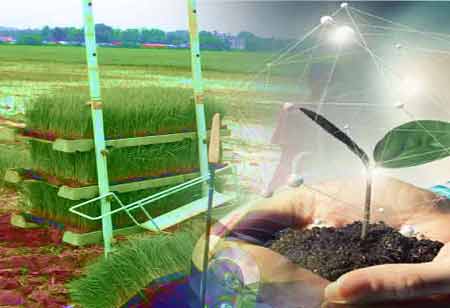Thank you for Subscribing to Agri Business Review Weekly Brief
Investment Strategies for Acquiring Farmland
We are living in uncertain times.

By
Agri Business Review | Wednesday, February 15, 2023
Stay ahead of the industry with exclusive feature stories on the top companies, expert insights and the latest news delivered straight to your inbox. Subscribe today.
Investors seek to protect their investments and mitigate risk as inflation has reached over 8 percent in recent months.
FREMONT, CA: We are living in uncertain times. The global economy is still feeling the impact of a worldwide pandemic and is undergoing strain due to international conflict. Across the country, labor shortages and transportation backlogs are affecting supply chain distribution. Fulfilling a grocery list is as unpredictable as budgeting for gas.
With inflation reaching over 8 percent in recent months, investors are looking for ways to mitigate risk and protect their investments. The coming year looks like a volatile year for many traditional financial mechanisms. Investors who want to grow their returns may consider nontraditional investment opportunities. Real estate may seem like an obvious investment choice when building a portfolio, but land, especially for agricultural use, is often overlooked and uncorrelated.
Agriculture has already been shown to be a good investment. Agricultural investments can offer portfolios with non-correlated diversification opportunities while offering potentially high returns with reduced risk. Real estate portfolios with agricultural properties are especially susceptible to this.
Commodities offer multiple opportunities for profits each year through multiple growing seasons and harvested returns. Unlike traditional assets, investors can get near-real-time insight into a farm's performance and change strategies as needed. A farmland investment is a low-risk, stable asset that rises over time.
Investors need to understand, however, the challenges that come with these investments. Global trade conflicts have led to a surge in commodity demand for agricultural real estate, and risks are also inherent in commodities.
Droughts, floods, and diseases can wipe out entire crops or affect profitability. Inflation is also pinching farmers and ranchers. Fertilizer, seed, and chemical prices have reached an all-time high. A lack of access to farm equipment also results in higher-than-expected prices for new equipment. There is also weather to consider, such as the extreme drought affecting much of the western United States.
New investors may feel intimidated by these environmental and operational risks, but portfolio-based analysis tools allow them to conduct a more comprehensive risk assessment. A portfolio tool uses historical and real-time production data combined with dynamic environmental data to benchmark potential and quantifies results.
Farms, however, require a more extensive review than traditional real estate investments to determine market value. As an example, consider the appraisal process.
Residential property values are calculated using regional market comps (i.e., comparable property prices), asset, and location characteristics. In real estate, insurance, and banking, parcel-level data sources like CoreLogicCLGX and Versik are commonly used to underwrite and appraise properties. However, market valuation processes and farmland appraisals aren't well-defined or data-driven.
For instance, benchmark yield production, land classification, and fair market value can all vary significantly between parcels, and the data resources to automate the appraisal process don't exist in large quantities. Farms' unique characteristics - how soil retains moisture, micronutrients that feed crops, climate, and historical production capabilities - play a significant role in determining their value.
The sources of information are not readily accessible to the public, nor the level of detail (at the field level) sufficient to accurately depict insights for a parcel of farmland are not traditionally factored into valuations. Investors cannot manage agricultural real estate as effectively as other asset classes due to these limitations of data access, data analysis, and data providers.
A growing number of technologies are responding to this need. Today, cloud computing enables satellite imagery and machine learning algorithms to scan data in near real-time, establishing performance benchmarks and modeling farm cash flow and profitability. Investors seeking reliable, actionable, and accessible data for portfolio analysis and risk-based pricing can use these new data sources.
Farmland investment strategies based on this data make it easier for everyday investors to invest in farmland through crowdfunding. The simplicity of the technology doesn't suit every investment strategy, however, and data access is crucial for identifying opportunities outside an easily navigable digital platform. Technology with granular solutions that can scale across geographies should interest these investors.
Data access is the first step, and the next phase is the learning curve and implementation phase. Growing access to actionable data offers new opportunities for approaching investment strategies but can quickly become a crippling roadblock if not properly leveraged. The most important thing is that the data is accurate and, more importantly, understandable.
Investors want to hire a team and technology that can provide insights for individual parcels and larger subsets of data. A benchmarking system ensures that targeted investments can be compared with other farms, and comparing stock purchasing avenues is quite similar. For investors to establish credible benchmarks, they need data that is packaged in a way that is easily digestible to gain access to this type of data.
By acquiring U.S. farmland, investors can achieve stable returns and uncorrelated risk through alternative asset classes with data-driven analytics. Data at the portfolio and parcel levels is needed to understand the geographic diversity of production regions. Investing in farmland requires reliable partners with the means and data to quantify investments' risks and enable diversification.
Therefore, it is essential to find brokers with experience steering the intricacies of the agricultural industry, who understand the geographic diversity of production regions, and who offer information sources tailored to interests and efficiency as investors embark on this journey toward farmland investment. Investing in this may be one of the best investments.





